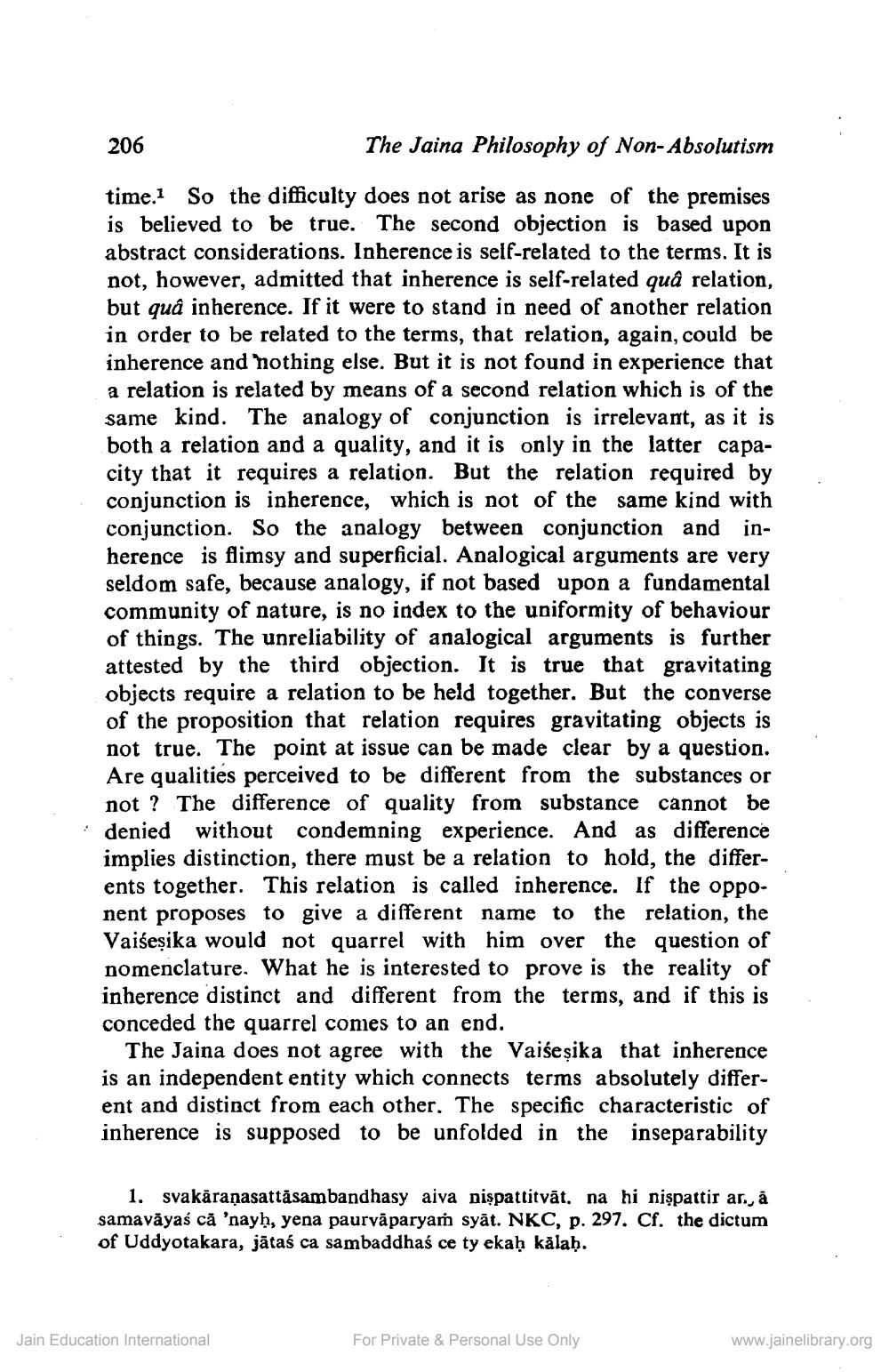________________
206
The Jaina Philosophy of Non- Absolutism
time. So the difficulty does not arise as none of the premises is believed to be true. The second objection is based upon abstract considerations. Inherence is self-related to the terms. It is not, however, admitted that inherence is self-related quâ relation, but quâ inherence. If it were to stand in need of another relation in order to be related to the terms, that relation, again, could be inherence and nothing else. But it is not found in experience that a relation is related by means of a second relation which is of the same kind. The analogy of conjunction is irrelevant, as it is both a relation and a quality, and it is only in the latter capacity that it requires a relation. But the relation required by conjunction is inherence, which is not of the same kind with conjunction. So the analogy between conjunction and inherence is flimsy and superficial. Analogical arguments are very seldom safe, because analogy, if not based upon a fundamental community of nature, is no index to the uniformity of behaviour of things. The unreliability of analogical arguments is further attested by the third objection. It is true that gravitating objects require a relation to be held together. But the converse of the proposition that relation requires gravitating objects is not true. The point at issue can be made clear by a question. Are qualities perceived to be different from the substances or not ? The difference of quality from substance cannot be denied without condemning experience. And as difference implies distinction, there must be a relation to hold, the differents together. This relation is called inherence. If the oppo. nent proposes to give a different name to the relation, the Vaiseșika would not quarrel with him over the question of nomenclature. What he is interested to prove is the reality of inherence distinct and different from the terms, and if this is conceded the quarrel comes to an end.
The Jaina does not agree with the Vaisesika that inherence is an independent entity which connects terms absolutely different and distinct from each other. The specific characteristic of inherence is supposed to be unfolded in the inseparability
1. svakāranasattasambandhasy aiva nispattitvāt. na hi nişpattir ar., a samavāyaś că 'nay), yena paurvāparyam syāt. NKC, p. 297. Cf. the dictum of Uddyotakara, jātaś ca sambaddhaś ce ty ekaḥ kälah.
Jain Education International
For Private & Personal Use Only
www.jainelibrary.org




